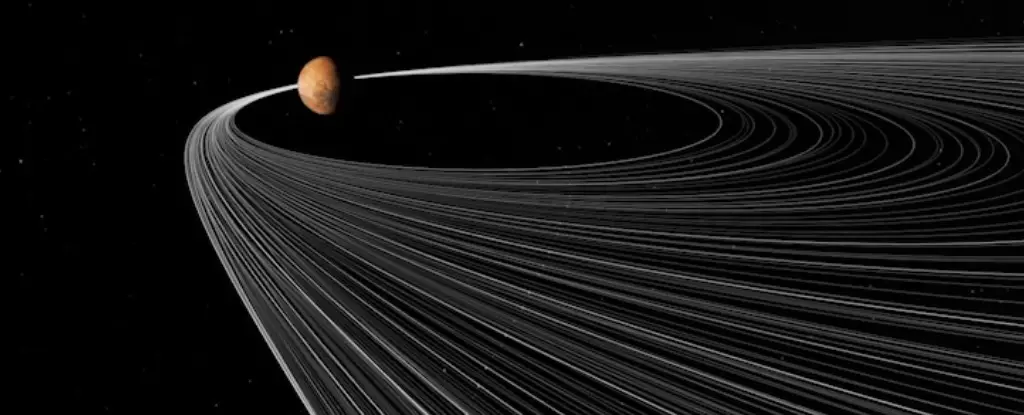Mars, often dubbed the Red Planet, boasts a unique characteristic within our Solar System — it is one of only two rocky planets that have naturally occurring moons. This distinction, however, comes with a shroud of mystery surrounding the origins of its moons, Phobos and Deimos. Unlike Earth, which has its Moon born from a dramatic cosmic collision with a protoplanet named Theia, the story of Mars’ moons is less straightforward and fraught with scientific intrigue. Understanding their formation is crucial not only for unraveling the history of Mars, but also for comprehending the dynamics of celestial bodies within our Solar System.
The origins of Deimos and Phobos have long puzzled astronomers and planetary scientists alike. Two primary theories have emerged over the years: the capture theory and the impact theory. The capture theory posits that both moons were once independent asteroids that ventured too close to Mars and succumbed to its gravitational pull. This explanation is alluring, yet presents a formidable challenge. Mars, being significantly smaller and possessing less gravity than Earth or Venus, poses questions about its ability to capture two bodies into stable orbits. Additionally, if they were captured asteroids, the expectation would be for their orbits to be more elliptical, deviating from the nearly circular paths they currently exhibit.
In contrast, the impact theory suggests that both moons formed from debris generated by a colossal impact event — potentially a collision with a sizable asteroid or comet striking Mars. This model accounts for the circular orbits of Phobos and Deimos, as a sufficiently massive impact could create a ring of debris from which the moons could coalesce. However, this theory suffers from its own set of anomalies. If the moons were formed from a debris disk, then logically, they would likely be in closer proximity to each other—yet Deimos orbits at a more substantial distance from Mars compared to Phobos. These inconsistencies have inspired scientists to seek a new perspective.
Recent studies and advanced computer simulations have led to the proposal of a novel hypothesis: the near-miss model. This idea introduces the notion that a large asteroid, during its celestial journey, could have passed dangerously close to Mars. The tidal forces would be significant enough to disrupt the asteroid, breaking it into assorted fragments dispersed in various trajectories around the planet. Over time, gravitational interactions with the Sun and other bodies in the Solar System would influence the orbits of these fragments.
The near-miss model explains both the origins of Phobos and Deimos as fragments from a single larger asteroid, while simultaneously addressing their current orbital characteristics. As the fragments collided and accumulated, they could form the two existing moons, maintaining their stability while orbiting Mars. The appeal of this hypothesis lies in its capacity to bridge the gaps left by previous theories. Nevertheless, many questions remain unanswered, and the quest for truth continues.
In pursuit of clarity regarding the formation and composition of Mars’ moons, scientists are eagerly looking forward to the Mars Moons eXploration (MMX) mission set to launch in 2026. This mission aims to not only study Phobos and Deimos in detail but also to retrieve samples from Phobos itself. Such samples could provide invaluable insights into the chemical and physical characteristics of the moons, giving weight to the ongoing theories about their origins.
The success of the MMX mission holds great promise for enhancing our understanding of not just Mars, but of rocky planetary formation in general. As we aspire to know the truth about the Martian moons, the scientific community remains united in its curiosity, reflecting a profound desire to uncover the mysteries of our cosmic neighbors. Ultimately, whether our theories converge on a singular model or suggest a more complex origin story, future explorations are essential for illuminating the shadows surrounding Phobos and Deimos, the enigmatic companions of the Red Planet.

